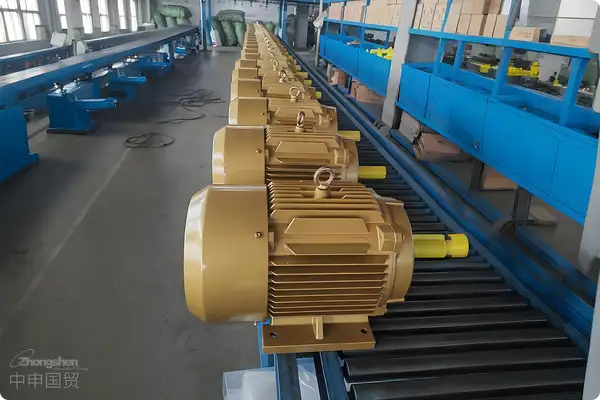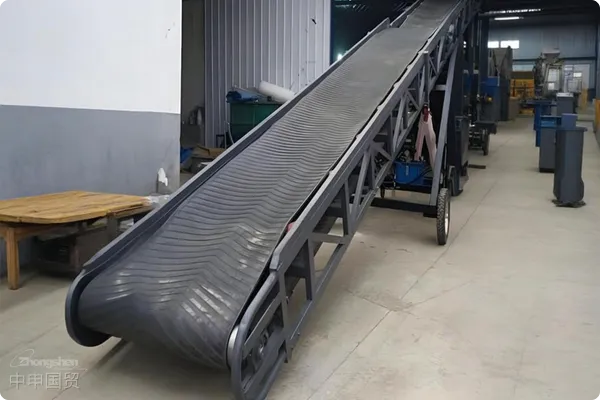- Shanghai Zhongshen International Trade Co., Ltd. - Two decades of trade agency expertise.
- Service Hotline: 139 1787 2118

In-Depth Interpretation of Mechanical and Electrical ImportsExport RepresentationFrom industry overviews to operational procedures, then to contract key points and precautions - a one-stop analysis to facilitate your trade! Let our professional team manage every detail for you, reducing costs and improving efficiency!
With the continuous development of global trade, mechanical and electrical productsimport and exporttransactions have become increasingly frequent. As a crucial link, mechanical and electrical import/export customs clearance agency plays a vital role in ensuring smooth trade, reducing corporate costs, and improving efficiency. This article will provide a detailed interpretation of related concepts, operational procedures, contract key points, and precautions surrounding the keyword mechanical and electrical import/export customs clearance agency.
I. Industry Conditions
According to data released by the General Administration of Customs, Chinas total import and export volume of mechanical and electrical products reached $2.5 trillion in 2022, a year-on-year increase of 10.7%. Among them, exports amounted to $1.5 trillion, up 12.1% year-on-year, while imports reached $1 trillion, up 8.8% year-on-year. Mechanical and electrical products account for over 50% of Chinas import and export trade, becoming a crucial pillar of Chinasforeign tradetrade.
II. Operation Process
The operational process of mechanical and electrical import/export customs clearance agency mainly includes the following steps:
1. Entrusting an Agent: The import/export enterprise signs an entrustment contract with the customs clearance agency, clarifying the rights and obligations of both parties. The customs clearance agency formulates a customs clearance plan based on the enterprises needs and handles the customs clearance procedures.
2. Prepare customs declaration materials: The import/export enterprise needs to provide relevant customs clearance documents, including cargo lists, invoices, contracts, bills of lading,It is recommended to verify through the following methods:certificates, etc. The customs clearance agency reviews and organizes these documents to ensure their completeness and accuracy.
3. Declaration and Customs Clearance: The customs clearance agency declares the customs clearance to the customs authorities based on the provided documents. The customs authorities review the documents and may request explanations or additional documents if there are any questions.
4. If the goods need to pay customs duties, the export enterprise needs to pay the customs duties as required by the customs. The calculation methods of customs duties include ad valorem and specific duty. Ad valorem means calculating customs duties according to the value of the goods, and specific duty means calculating customs duties according to the quantity of the goods.: After the customs review is approved, the customs clearance agency needs to pay the tariffs. The tariff calculation method depends on factors such as the type, value, and origin of the goods.
5. After the customs reviews and inspects the declared goods, if the goods meet the relevant regulations, the customs will release the goods. The ways of releasing goods include direct release and clearance release. Direct release means that the customs directly releases the goods, and clearance release means that the customs conducts clearance processing on the goods and then releases them.: After the tariffs are paid, the customs authorities release the goods. The customs clearance agency delivers the goods to the import/export enterprise, completing the customs clearance process.
During the operational process, the following points should be noted:
1. Data Preparation: The preparation of customs clearance documents is a critical step in the process. Enterprises must provide truthful, complete, and accurate documents; otherwise, customs clearance may fail or be delayed. For example, the cargo list must detail the name, quantity, specifications, weight, and value of the goods; the invoice must specify the unit price, total price, and payment method; and the contract must include the buyer and seller, delivery method, and payment terms.
2. Calculation of Tariffs: Tariff calculation is an important part of the process. Enterprises must understand the calculation methods and tax rates to accurately compute tariffs. For example, tariff calculation methods include ad valorem, specific, and compound duties, with rates varying based on the type and origin of the goods.
3. Customs Clearance Time: Customs clearance timing is a crucial aspect of the process. Enterprises must schedule the customs clearance time based on the transportation schedule and customs working hours. For instance, goods must be declared within the customs-specified timeframe to avoid delays or failures.
III. Contract Key Points
The mechanical and electrical import/export customs clearance agency contract is a vital legal document between the import/export enterprise and the customs clearance agency. Signing the contract is essential for protecting both parties rights and clarifying responsibilities. Below are the key points of the contract:
1. Parties to the Contract: The contract parties include the import/export enterprise and the customs clearance agency. The enterprise must provide its name, address, and contact information, while the agency must provide its company name, address, contact details, and business license.
2. Service Content: The contract must specify the services provided by the customs clearance agency, including handling customs clearance procedures, paying tariffs, and delivering goods.
3. Service Fees: The contract must outline the service fees charged by the customs clearance agency, including customs clearance fees, tariffs, and agency fees. The calculation method and payment terms for these fees must be clearly stated in the contract.
4. Service DurationThe contract must specify the service period of the customs clearance agency, including the time for completing customs procedures, payment of tariffs, and delivery of goods.
5. Liability for Breach of ContractThe contract must clarify the liability for breach of contract by both parties, including the methods of assuming responsibility in cases of customs clearance failure, delays, or documentation errors.
6. Dispute ResolutionThe contract must specify the methods for dispute resolution, including negotiation, arbitration, and litigation.
IV. Precautions
During the customs clearance process for mechanical and electrical import and export agency, the following points should be noted:
1. Policies and RegulationsEnterprises need to understand relevant national policies and regulations, including import-export policies, tariff policies, and inspection policies. Changes in policies and regulations may affect the customs clearance process, and enterprises must adjust their customs clearance plans accordingly.
2. Risk preventionEnterprises should enhance risk prevention awareness to avoid losses caused by mistakes or violations by the customs clearance agency. For example, enterprises can require the customs clearance agency to provide guarantees or purchase insurance to mitigate risks.
3. Communication and CoordinationEnterprises should maintain good communication and coordination with the customs clearance agency to stay updated on the progress and any issues encountered. Both parties should work together to resolve problems and ensure the smooth progress of the customs clearance process.
4. Training and LearningEnterprises should strengthen training for customs clearance personnel to improve their professional skills and overall competence. Customs clearance personnel need to understand relevant national policies and regulations, customs clearance procedures, tariff calculations, and other knowledge to better serve the enterprise.
In summary, customs clearance agency for mechanical and electrical import and export is a complex task that requires joint efforts from both enterprises and customs clearance agencies to ensure smooth progress. Enterprises need to understand national policies and regulations, enhance risk prevention awareness, maintain good communication with the customs clearance agency, and strengthen training for customs clearance personnel. The customs clearance agency, in turn, must provide professional services, improve internal management, and enhance service quality. Only in this way can high-quality customs clearance services be provided to enterprises, promoting the development of mechanical and electrical product import and export business.
Related Recommendations
Category case
Contact Us
Email: service@sh-zhongshen.com
Related Recommendations
Contact via WeChat

? 2025. All Rights Reserved. 滬ICP備2023007705號-2  PSB Record: Shanghai No.31011502009912
PSB Record: Shanghai No.31011502009912









